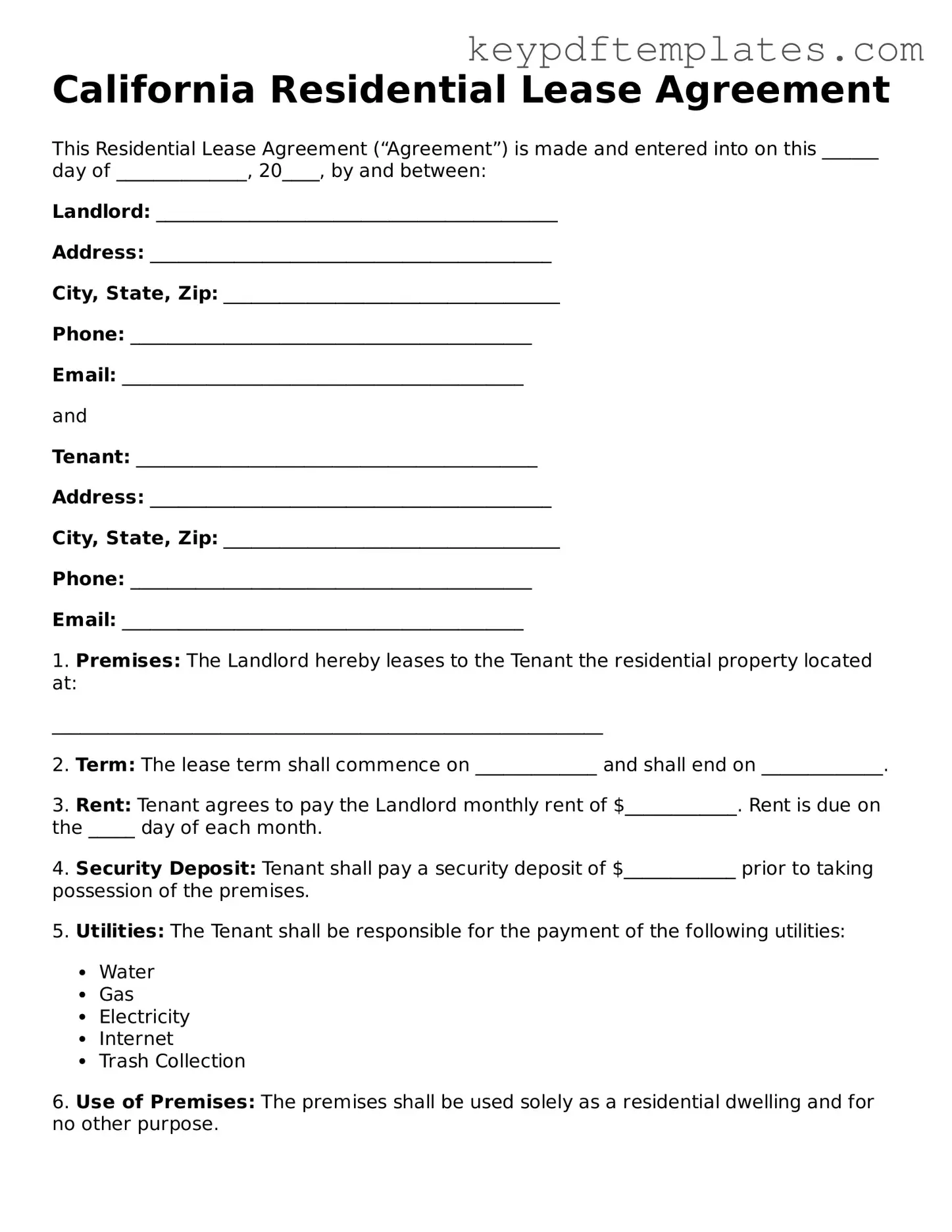Legal Residential Lease Agreement Document for the State of California
The California Residential Lease Agreement is a legal document that outlines the terms and conditions between a landlord and tenant for renting a residential property. This form serves to protect the rights of both parties and ensures clear communication regarding the rental arrangement. Understanding this agreement is crucial for anyone involved in renting a home in California.
Modify Document Online
